How Gardening Can Help Combat Climate Change?
Gardening is not just a delightful hobby; it’s a powerful ally in the fight against climate change. When we think of climate action, we often picture large-scale initiatives or government policies, but what if I told you that your backyard could be a frontline in this battle? Yes, that's right! By nurturing a garden, you can contribute to a healthier planet in more ways than one. From enhancing biodiversity to reducing your carbon footprint, gardening offers a plethora of benefits that can make a significant impact on our environment.
Imagine a world where every patch of soil is teeming with life, where plants absorb carbon dioxide, and where local wildlife thrives. This isn't just a dream; it's a reality we can create through our gardening practices. Each seed planted is a step toward a more sustainable future. Not only does gardening allow us to reconnect with nature, but it also equips us with the tools to combat climate change effectively. So, how exactly does gardening fit into this complex puzzle? Let’s dig deeper!
First off, let's talk about carbon sequestration. Plants, especially trees and shrubs, are natural carbon sinks. They absorb carbon dioxide from the atmosphere and store it in their biomass. By choosing to plant more trees and diverse species in our gardens, we can significantly enhance this natural process. A single mature tree can absorb about 48 pounds of carbon dioxide per year! So, whether you have a sprawling garden or a tiny balcony, every plant counts. Even small changes, like adding a few potted plants, can contribute to this vital process.
Moreover, gardening promotes biodiversity. A diverse garden can provide habitats for all sorts of creatures, from beneficial insects to birds and small mammals. These species play crucial roles in maintaining ecological balance and resilience against climate change. By incorporating a variety of plants, especially native species, you create a mini-ecosystem that supports local wildlife. This is not just beneficial for the environment; it also enriches your gardening experience, as you get to witness the beauty of nature unfolding right before your eyes.
As we explore the multifaceted benefits of gardening, it becomes clear that our gardens can be much more than just a source of food or beauty; they can be a beacon of hope in the fight against climate change. So, are you ready to roll up your sleeves and start planting? Let’s cultivate a greener, more sustainable world together!
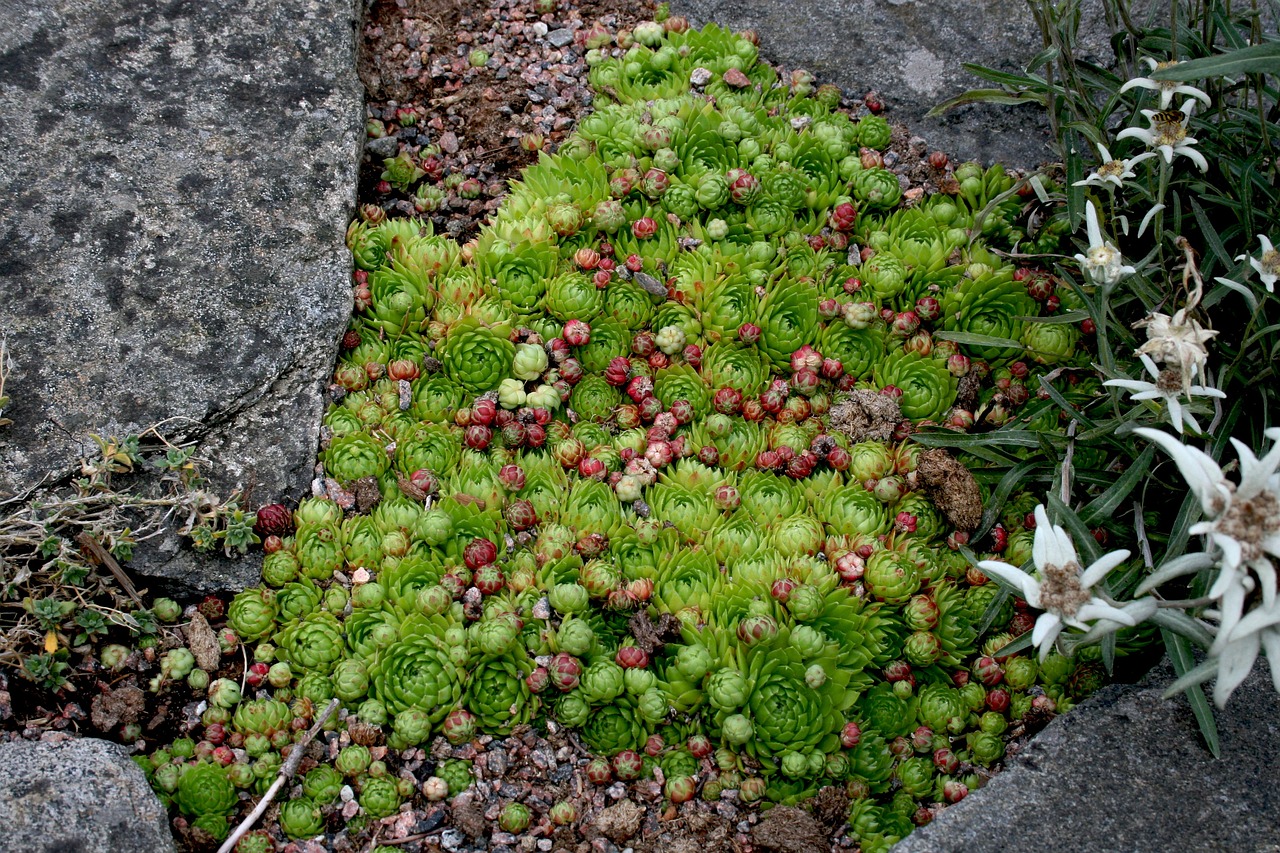
The Role of Plants in Carbon Sequestration
Have you ever stopped to think about the incredible power of plants? They are not just beautiful additions to our gardens; they are also nature's superheroes in the fight against climate change. Plants play a crucial role in carbon sequestration, which is the process of capturing and storing atmospheric carbon dioxide (CO2). This process is vital for mitigating the effects of climate change, and as gardeners, we can harness this power in our own backyards.
When plants grow, they absorb CO2 from the atmosphere during photosynthesis, using it to create energy and grow. This means that the more plants we have, the more carbon they can sequester. Different types of plants have varying capacities for carbon absorption. For instance, trees are particularly effective at storing carbon due to their size and longevity. A mature tree can absorb about 48 pounds of CO2 annually. On the other hand, shrubs and herbaceous plants also contribute to this process, albeit on a smaller scale.
Understanding the types of plants that are most effective at carbon sequestration can guide us in making informed choices for our gardens. Here’s a quick look at some plant categories and their carbon sequestration potential:
| Plant Type | Carbon Sequestration Potential (lbs/year) |
|---|---|
| Mature Trees | 48 |
| Shrubs | 12 |
| Herbaceous Plants | 5 |
By planting a diverse range of species, we can maximize the carbon absorption in our gardens. Incorporating trees, shrubs, and ground cover plants creates a multi-layered ecosystem that not only captures more carbon but also provides habitats for wildlife. This diversity is essential for a healthy garden that can withstand the challenges posed by climate change.
Moreover, gardening practices such as composting and mulching can enhance soil health, which plays a significant role in carbon storage. Healthy soil is like a sponge for carbon; it can hold and store substantial amounts of CO2. By enriching our soil with organic matter, we not only improve plant growth but also increase its carbon sequestration capabilities. So, every time you add compost to your garden, you're not just feeding your plants; you're also contributing to the fight against climate change!
In conclusion, gardening is not just a hobby; it's a powerful tool for combating climate change. By understanding the role of plants in carbon sequestration and implementing sustainable gardening practices, we can all contribute to a healthier planet. So, the next time you dig in the dirt, remember that you are part of a larger movement towards sustainability and environmental stewardship.

Promoting Biodiversity Through Gardening
Gardening isn't just about growing beautiful flowers or delicious vegetables; it’s a powerful way to promote biodiversity in our local ecosystems. When you dig your hands into the soil and plant a variety of species, you're not just creating a garden—you're crafting a habitat that supports a myriad of life forms. Think of your garden as a miniature ecosystem, where every plant, insect, and animal plays a vital role. By choosing to incorporate diverse plant selections, we can enhance the resilience of our gardens and the surrounding environment, making it more adaptable to the changing climate.
One of the most significant benefits of gardening for biodiversity is that it provides essential habitats for various species. For instance, native plants are particularly crucial because they have co-evolved with local wildlife, offering food and shelter that non-native species simply cannot. When you plant a garden filled with native flora, you’re essentially creating a welcoming space for birds, butterflies, and beneficial insects. This not only boosts the local population of these species but also strengthens the ecosystem as a whole.
To illustrate the importance of native plants, consider the following table that highlights some common native plants and the wildlife they support:
| Native Plant | Wildlife Supported |
|---|---|
| Echinacea (Coneflower) | Butterflies, Bees |
| Rudbeckia (Black-eyed Susan) | Birds, Pollinators |
| Asclepias (Milkweed) | Monarch Butterflies |
| Solidago (Goldenrod) | Bees, Other Pollinators |
By choosing plants that are native to your region, you not only create a more vibrant garden but also contribute to the overall health of the ecosystem. Additionally, incorporating a variety of plants can help attract pollinators, which are vital for the reproduction of many flowering plants and crops. Without these busy little workers, our food supply and natural landscapes would suffer tremendously.
Pollinators like bees, butterflies, and hummingbirds are essential for a thriving garden. They help in the fertilization of plants, leading to fruit and seed production. To attract these important creatures, consider planting a mix of flowering plants that bloom at different times throughout the growing season. This ensures that there is always something in bloom, providing a continuous food source for pollinators. Think of your garden as a buffet for these creatures—variety is key!
Gardens can serve as vital habitats for various wildlife species. By designing your garden with wildlife in mind, you can create spaces that encourage animals to visit and stay. Incorporating features such as native shrubs, wildflower meadows, and even small water sources can significantly enhance the biodiversity of your garden. For example, a small pond can attract frogs and dragonflies, while a brush pile can provide shelter for small mammals and insects. Each element you add contributes to a richer, more diverse ecosystem.
In summary, promoting biodiversity through gardening is not just a noble endeavor; it's a necessary one. By creating diverse habitats and supporting local wildlife, we can help our ecosystems thrive and become more resilient to the impacts of climate change. So, the next time you plant a seed, remember that you’re not just growing a plant; you’re nurturing a whole community of life!
- How can I start promoting biodiversity in my garden?
Begin by researching native plants in your area and consider incorporating them into your garden design. - What are some easy plants to attract pollinators?
Plants like coneflowers, milkweed, and black-eyed Susans are excellent choices for attracting pollinators. - How can I create a wildlife-friendly garden?
Include a variety of plants, provide water sources, and create shelter options like brush piles or birdhouses.
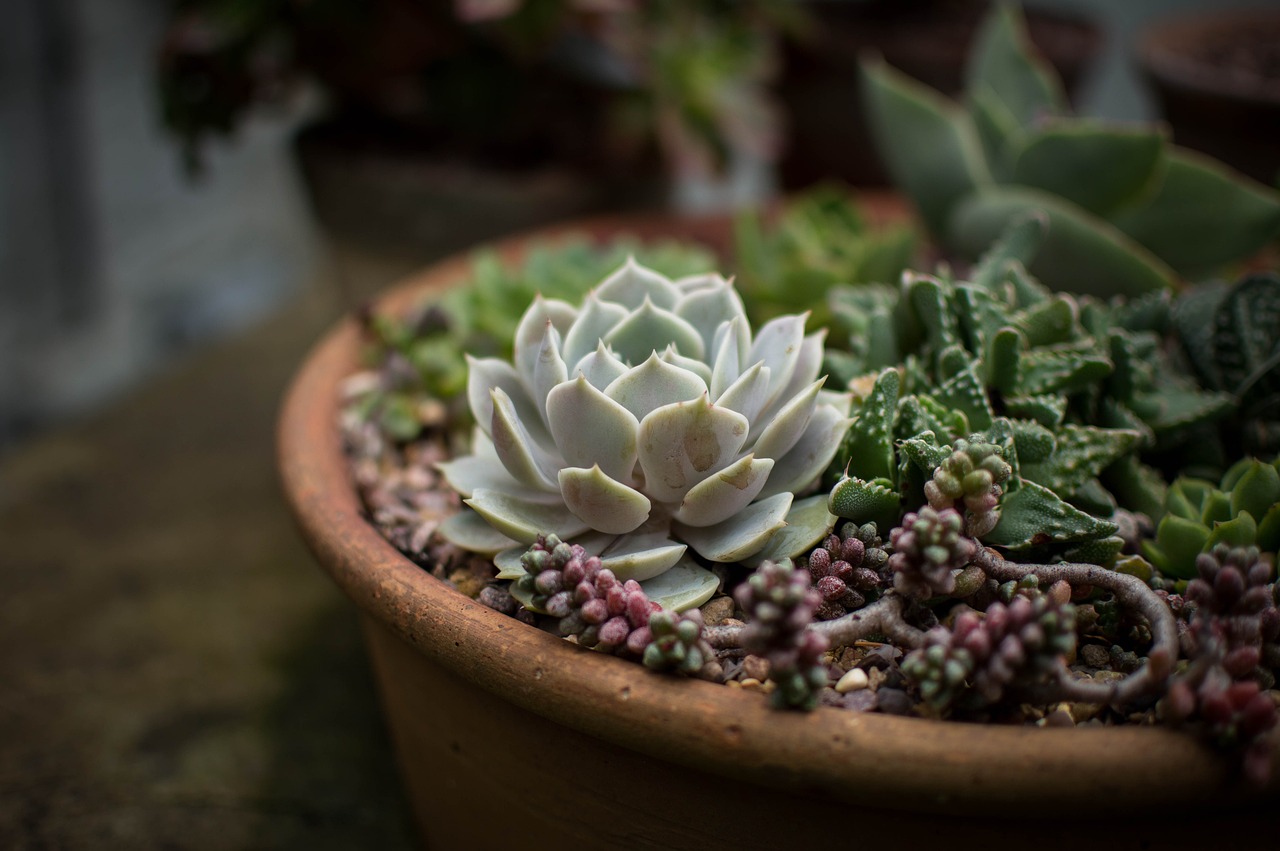
Native Plants and Their Benefits
When it comes to gardening, embracing native plants is like inviting your local ecosystem to a party. These plants are the unsung heroes of our gardens, perfectly adapted to the climate, soil, and wildlife of their regions. By incorporating native flora into your gardening practices, you're not just beautifying your space; you're also providing essential benefits that can significantly impact local biodiversity and ecological health.
One of the primary advantages of native plants is their ability to support local wildlife. Unlike exotic species, which may require special conditions to thrive, native plants have evolved alongside local animals and insects. This means they provide the right food and habitat for a variety of species, including birds, butterflies, and beneficial insects. For example, the Eastern Redbud tree offers nectar for pollinators in the spring, while its heart-shaped leaves provide shelter for nesting birds.
Moreover, native plants are generally more resilient to local pests and diseases, reducing the need for chemical pesticides. This not only benefits the plants themselves but also promotes a healthier environment for all living beings. When you opt for native species, you’re contributing to a balanced ecosystem that thrives on natural interactions.
Another remarkable benefit of native plants is their role in water conservation. Many native species are drought-resistant, which means they require less watering compared to non-native plants. This is particularly important as climate change leads to erratic weather patterns and water shortages. By choosing plants that are naturally adapted to your local conditions, you can create a vibrant garden that flourishes even during dry spells.
To illustrate the diversity and benefits of native plants, consider the following table:
| Native Plant | Benefits | Wildlife Supported |
|---|---|---|
| Butterfly Weed | Attracts butterflies; drought-resistant | Butterflies, bees |
| Wild Bergamot | Medicinal properties; fragrant | Hummingbirds, bees |
| Black-Eyed Susan | Long bloom period; easy to grow | Birds, butterflies |
In addition to these ecological benefits, native plants can enhance the aesthetic appeal of your garden. Their natural beauty often requires less maintenance, allowing you to spend more time enjoying your outdoor space rather than constantly tending to it. Imagine a garden filled with vibrant colors and diverse textures, all while playing a crucial role in supporting your local ecosystem.
In summary, choosing native plants is not just a gardening trend; it’s a commitment to sustainability and environmental stewardship. By planting native species, you’re investing in a healthier planet, supporting local wildlife, and creating a resilient garden that can withstand the challenges of climate change. So, the next time you think about what to plant, remember that native plants are not just good for your garden; they’re great for the world!
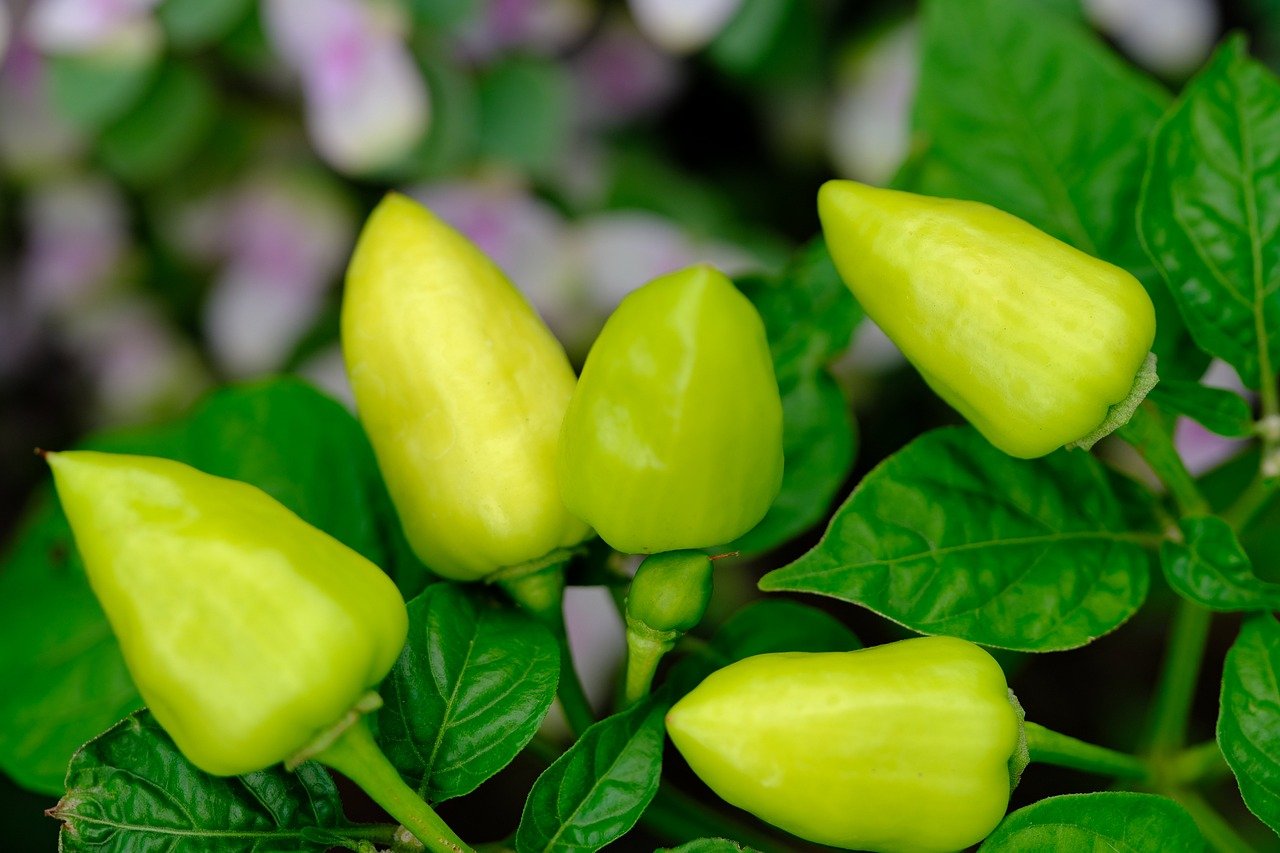
Attracting Pollinators
When we think about gardening, we often envision beautiful flowers and lush greenery. But did you know that your garden can also play a crucial role in attracting pollinators? These tiny creatures, including bees, butterflies, and hummingbirds, are essential for the reproduction of many plants and crops. By creating a pollinator-friendly garden, you not only enhance your landscape but also contribute to the overall health of our ecosystems.
The first step in attracting these vital pollinators is to choose the right plants. Native plants are particularly effective because they have co-evolved with local pollinators, providing the food and habitat that these species need. For instance, plants like milkweed attract monarch butterflies, while coneflowers and bee balm are favorites among bees. By incorporating a variety of native flowers, you create a buffet of options for pollinators, ensuring they have something to feast on throughout the growing season.
Moreover, it’s essential to consider the layout of your garden. Grouping plants in clusters rather than spreading them out can make it easier for pollinators to find food. Imagine a bustling restaurant where all the tables are scattered versus one where the tables are grouped together—it's much easier to get a meal when you're not wandering aimlessly! Additionally, providing a range of bloom times ensures that there is always something in flower, from early spring to late fall, keeping the pollinators well-fed all season long.
Water sources are another key element in attracting pollinators. A simple birdbath or a small water feature can serve as a refreshing oasis for these creatures. Just like us, they need water to survive, and a reliable source can make your garden a go-to spot in the neighborhood. Remember to keep the water fresh and clean, as stagnant water can become a breeding ground for mosquitoes.
Lastly, consider minimizing the use of pesticides in your garden. Many common pesticides can harm pollinators, leading to a decline in their populations. Instead, opt for organic gardening practices that promote a healthy ecosystem. By embracing natural pest control methods, such as introducing beneficial insects or using barriers, you can protect your plants while ensuring that pollinators thrive.
To summarize, attracting pollinators to your garden is not just beneficial for your plants; it’s a vital step in supporting biodiversity and combating climate change. By planting native species, designing your garden thoughtfully, providing water, and avoiding harmful chemicals, you can create a haven for these essential beings. So, roll up your sleeves and get gardening—your local pollinators will thank you!
- What types of plants attract pollinators? Native flowers, such as coneflowers, bee balm, and milkweed, are particularly effective.
- How can I provide water for pollinators? A birdbath or small water feature can serve as a great source of hydration.
- Are pesticides harmful to pollinators? Yes, many pesticides can negatively impact pollinator populations, so it's best to use organic methods.
- Can I attract pollinators in a small garden? Absolutely! Even small spaces can support pollinators with the right plant choices and care.
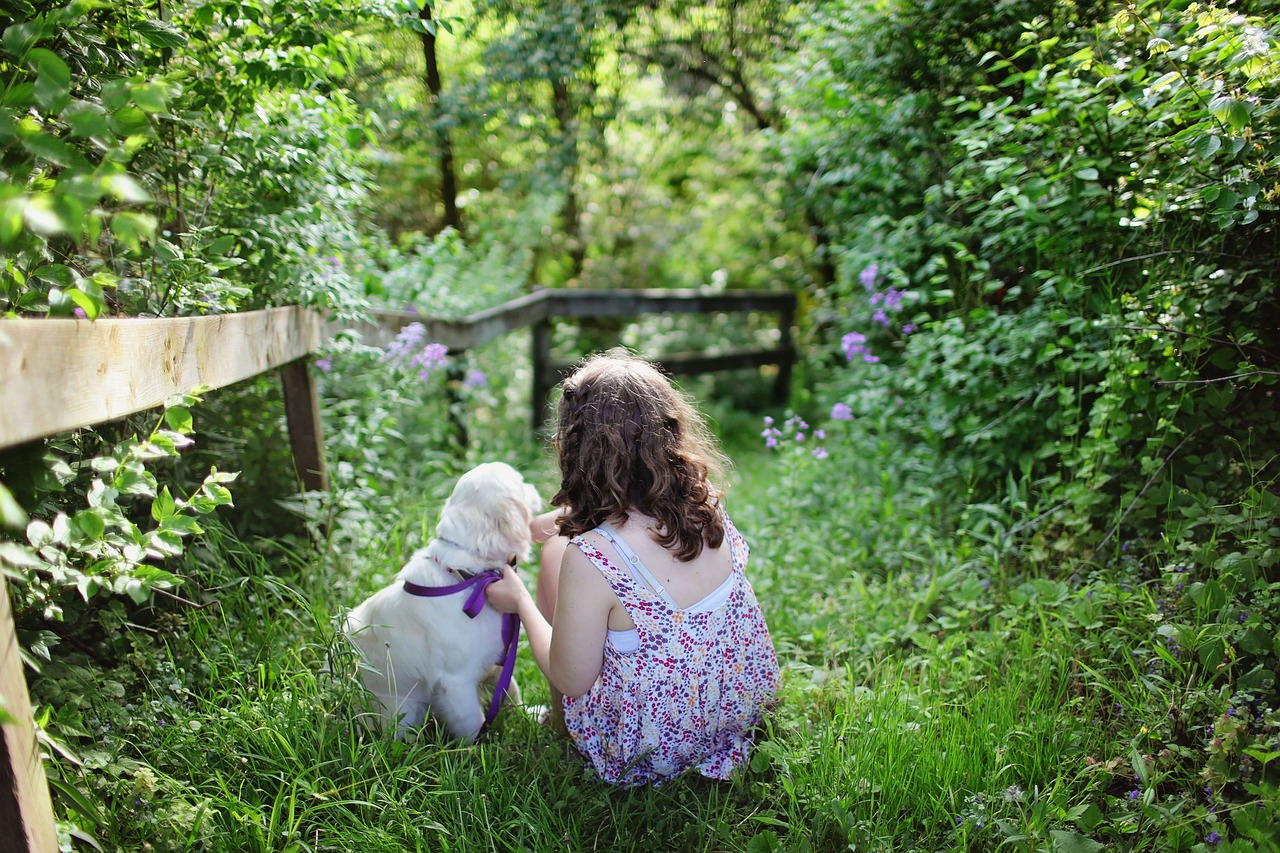
Creating Wildlife Habitats
Creating wildlife habitats in your garden is not just a noble endeavor; it's a vital step towards fostering a balanced ecosystem. Imagine your garden as a small oasis, a sanctuary where various species can thrive and coexist. By incorporating elements that cater to local wildlife, you can transform your outdoor space into a vibrant habitat that supports everything from birds to beneficial insects.
One of the first steps in creating a wildlife-friendly garden is to introduce a variety of plants that provide food, shelter, and nesting sites. Native plants are particularly effective because they have evolved to coexist with local wildlife. For instance, flowering plants attract pollinators such as bees and butterflies, while berry-bearing shrubs can serve as a food source for birds. The more diverse your plant selection, the more wildlife you are likely to attract. Consider including:
- Flowering plants: These provide nectar for pollinators.
- Fruit-bearing trees and shrubs: These offer food for birds and small mammals.
- Ground cover plants: These create shelter for insects and small animals.
Moreover, incorporating features like bird baths, insect hotels, and native grasses can significantly enhance the habitat. Bird baths not only provide drinking water but also a place for birds to bathe, helping them maintain their feathers. Insect hotels, on the other hand, create safe spaces for beneficial insects to lay their eggs and find shelter during harsh weather conditions.
Another crucial aspect of creating wildlife habitats is ensuring that your garden has a water source. A small pond, a rain garden, or even a simple water dish can make a world of difference. Water bodies attract various species, including amphibians, which play a key role in controlling pest populations.
Don't forget about the importance of shelter. Leaving some areas of your garden a little wild can provide cover for small animals and insects. Piles of leaves, logs, or stones can serve as excellent hiding spots for critters. Additionally, consider planting dense shrubs or creating brush piles, which can act as natural shelters.
Lastly, it’s important to minimize the use of pesticides and herbicides in your garden. These chemicals can harm not just the targeted pests but also beneficial insects and wildlife. Embracing organic gardening practices not only protects your local ecosystem but also promotes a healthier environment for you and your family.
In conclusion, creating wildlife habitats in your garden is a rewarding way to contribute to biodiversity and ecological balance. By making thoughtful choices about the plants you grow and the features you incorporate, you can create a thriving ecosystem right in your backyard. So why not start today? Your garden can become a haven for wildlife, and in doing so, you’ll play a crucial role in combating climate change.
Q: How can I attract more birds to my garden?
A: To attract more birds, consider planting native trees and shrubs that produce berries, installing bird feeders, and providing a water source like a bird bath.
Q: What types of plants are best for attracting pollinators?
A: Native flowering plants such as coneflowers, milkweed, and bee balm are excellent choices for attracting pollinators like bees and butterflies.
Q: How can I create a habitat for beneficial insects?
A: You can create habitats for beneficial insects by planting a variety of flowers, providing shelter through insect hotels, and avoiding chemical pesticides.
Q: Is it necessary to leave parts of my garden wild?
A: Yes, leaving parts of your garden wild can provide essential shelter and food for various wildlife, contributing to a more balanced ecosystem.

Water Conservation Techniques in Gardening
In today's world, where every drop of water counts, have become essential. As we grapple with the realities of climate change, implementing effective strategies to conserve water in our gardens not only ensures the health of our plants but also contributes to a larger environmental cause. So, how can we make our gardening practices more water-efficient? Let's dig into some practical methods that can help!
One of the most effective techniques is the use of drip irrigation. Unlike traditional sprinklers that waste water through evaporation and runoff, drip irrigation delivers water directly to the roots of the plants. This method not only conserves water but also promotes healthier plant growth by ensuring that moisture reaches the areas where it’s needed most. Imagine watering your plants with a gentle, steady stream that mimics a natural rainfall—this is what drip irrigation achieves.
Another fantastic approach is the implementation of mulching. By covering the soil with organic materials such as straw, bark, or compost, you create a protective layer that reduces evaporation. This simple yet effective technique keeps the soil cooler and moist, allowing your plants to thrive even during the hottest days. Plus, as the mulch breaks down, it enriches the soil, creating a win-win situation for both your garden and the environment!
Additionally, consider using rain barrels to collect and store rainwater. This practice not only reduces your reliance on municipal water systems but also takes advantage of a natural resource that would otherwise go to waste. Setting up a rain barrel is as easy as placing it under a downspout to catch runoff from your roof. You can then use this collected water to irrigate your garden, providing a sustainable source of hydration for your plants.
Incorporating drought-resistant plants into your garden design is also a smart way to conserve water. These plants are adapted to survive in low-water conditions, making them ideal for regions prone to drought. By selecting native species or those known for their resilience, you can create a beautiful garden that requires significantly less watering. Think of it as choosing to plant a garden that can weather the storms of climate change with grace!
Lastly, don't forget about the importance of soil health. Healthy soil retains moisture better than depleted soil, so investing in soil amendments like compost and organic matter can significantly improve your garden's water retention capabilities. When the soil is rich and well-aerated, it acts like a sponge, soaking up water and holding it for your plants to use. This not only reduces the frequency of watering but also enhances the overall vitality of your garden.
In summary, adopting these water conservation techniques in gardening not only helps you maintain a lush and vibrant garden but also plays a crucial role in combating climate change. By being mindful of our water usage and implementing sustainable practices, we can create a ripple effect that benefits our communities and the planet. So, why not start today? Your garden—and the environment—will thank you!
- What is the best way to conserve water in my garden?
Implementing drip irrigation, using mulch, and choosing drought-resistant plants are some of the best ways to conserve water.
- How can I collect rainwater for my garden?
Setting up rain barrels under downspouts is a simple way to collect rainwater for irrigation.
- What are drought-resistant plants?
Drought-resistant plants are species that can survive with minimal water, often native to arid regions.
- Why is soil health important for water conservation?
Healthy soil retains moisture better, reducing the need for frequent watering and promoting plant health.

Reducing Urban Heat Islands
Urban Heat Islands (UHIs) are a phenomenon where urban areas experience significantly higher temperatures than their rural surroundings due to human activities and infrastructure. This temperature difference can be attributed to factors like the abundance of asphalt, concrete, and buildings that absorb and retain heat. But what if I told you that gardening could be a game-changer in combating this issue? Yes, you heard that right! By incorporating green spaces into our urban landscapes, we can effectively reduce these heat islands and create a cooler, more pleasant environment.
Gardening plays a pivotal role in mitigating the effects of UHIs. When we introduce plants into our cities, we not only beautify our surroundings but also provide much-needed shade and evapotranspiration. This process occurs when plants release water vapor into the air, which helps cool the atmosphere. Imagine stepping into a park on a hot summer day; the difference in temperature between the shaded area and the sunlit pavement can be striking! Thus, increasing the number of gardens—whether they are small balcony gardens or expansive community parks—can significantly lower local temperatures.
Moreover, the implementation of green roofs and vertical gardens can take this concept to new heights—literally! These innovative gardening solutions not only reduce the heat absorbed by traditional rooftops but also provide insulation for buildings, leading to lower energy consumption. According to a study by the Environmental Protection Agency (EPA), green roofs can lower surface temperatures by as much as 40°F (4°C) compared to conventional roofs. Isn't that impressive? This not only helps to cool the city but also contributes to better air quality and biodiversity.
To give you a clearer picture of the benefits, here's a quick comparison of traditional urban surfaces versus green spaces:
| Surface Type | Temperature Increase (°F) | Cooling Effect |
|---|---|---|
| Asphalt | Up to 70°F | Minimal |
| Concrete | Up to 60°F | Minimal |
| Green Roofs | Less than 40°F | Significant |
| Urban Parks | Less than 30°F | High |
Additionally, community gardening initiatives can foster collaboration among residents, encouraging them to come together and create green spaces that benefit everyone. These gardens not only provide fresh produce but also act as natural air conditioners, reducing the heat in the immediate vicinity. When communities unite to plant trees, flowers, and vegetables, they cultivate not just food but also a sense of shared responsibility towards our environment.
In conclusion, reducing Urban Heat Islands is not just a lofty goal; it's a tangible outcome that can be achieved through gardening. By embracing green spaces, whether through individual efforts or community initiatives, we can create cooler, healthier urban environments. So, the next time you think about gardening, remember: you’re not just planting seeds; you’re sowing the future of our cities!
- What are Urban Heat Islands?
Urban Heat Islands are urban areas that experience higher temperatures than their rural counterparts due to human activities and infrastructure.
- How does gardening help reduce Urban Heat Islands?
Gardening provides shade, promotes evapotranspiration, and introduces green spaces that can significantly lower local temperatures.
- What are green roofs?
Green roofs are roofs covered with vegetation that help reduce heat absorption, provide insulation, and improve air quality.
- How can I start a community garden?
Start by gathering interested neighbors, finding an appropriate location, and consulting local gardening resources for guidance on best practices.
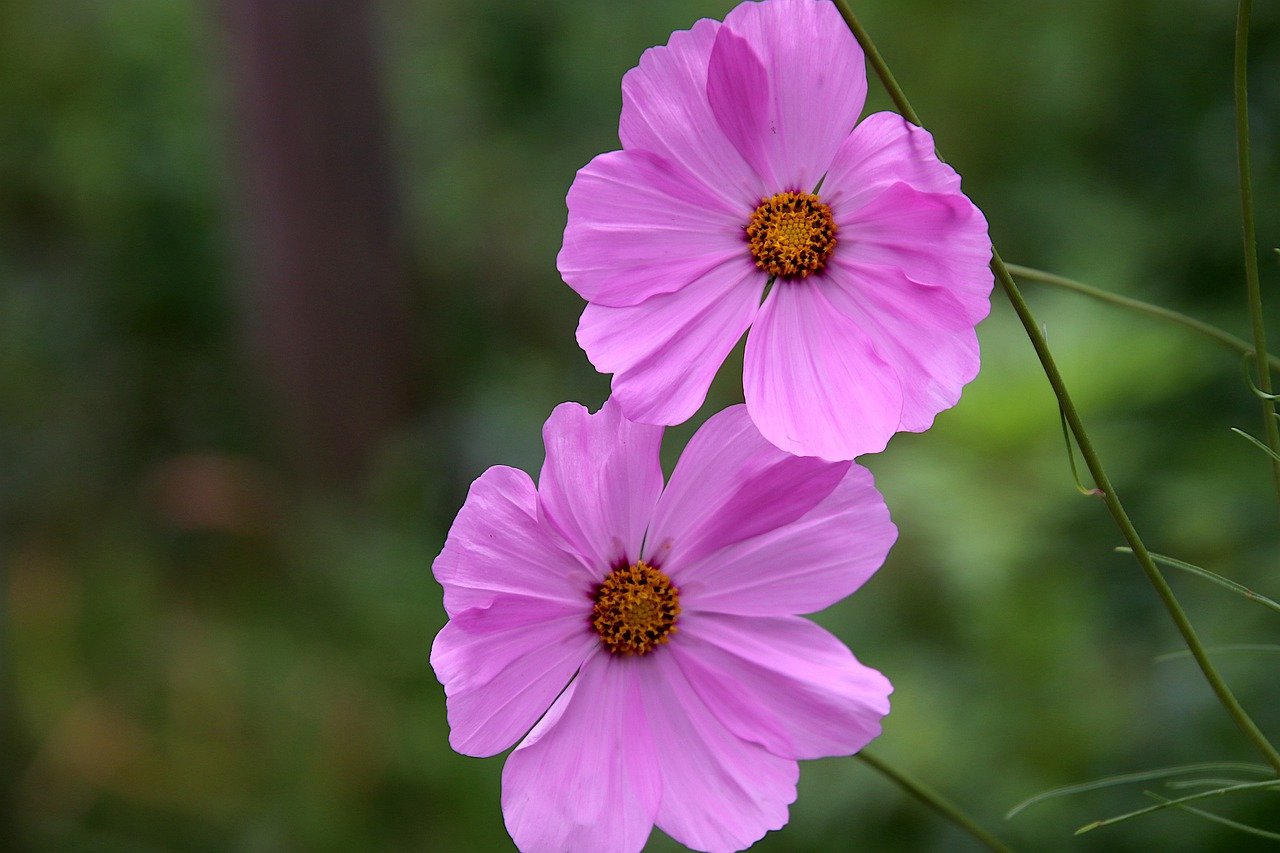
Green Roofs and Vertical Gardens
In the bustling heart of urban landscapes, where concrete and steel dominate, green roofs and vertical gardens emerge as refreshing sanctuaries. These innovative gardening solutions not only beautify our cities but also play a pivotal role in combating climate change. Imagine a world where rooftops are not just barren spaces but vibrant ecosystems that help cool our cities, improve air quality, and support biodiversity. Sounds appealing, right?
Green roofs, often referred to as living roofs, are layered systems that support plant life on the rooftops of buildings. They consist of several components, including a waterproof membrane, drainage layers, and a growing medium. By transforming unused spaces into lush gardens, green roofs can significantly lower the urban heat island effect, a phenomenon where city temperatures soar higher than surrounding rural areas. This is especially crucial as cities continue to expand, leading to increased energy consumption for cooling and heating.
On the other hand, vertical gardens—also known as living walls—are an ingenious way to integrate greenery into limited spaces. These gardens utilize wall-mounted systems to grow plants vertically, making them perfect for small apartments, urban cafes, and office buildings. Vertical gardens not only add aesthetic value but also serve as natural air filters, absorbing pollutants and releasing oxygen. It’s like having a little piece of nature right at your fingertips!
Here are some of the key benefits of green roofs and vertical gardens:
- Temperature Regulation: Both green roofs and vertical gardens help insulate buildings, reducing the need for air conditioning in summer and heating in winter.
- Stormwater Management: These green installations can absorb rainwater, minimizing runoff and lowering the risk of flooding.
- Biodiversity Enhancement: They provide habitats for birds, insects, and other wildlife, fostering a richer urban ecosystem.
- Improved Air Quality: Plants naturally filter pollutants, leading to cleaner air for city dwellers.
- Noise Reduction: Green roofs can act as sound insulators, making urban environments quieter.
Implementing green roofs and vertical gardens is not just about aesthetics; it's about creating a sustainable future. Cities like Singapore and Toronto have already embraced these concepts, showcasing stunning examples of how nature can coexist with urban living. In fact, Toronto has implemented a Green Roof Bylaw that mandates green roofs on new developments, setting a precedent for cities worldwide.
Furthermore, these initiatives can inspire community involvement. Imagine local workshops teaching residents how to create their own vertical gardens or community projects that transform unused rooftops into green spaces. This collective effort can foster a sense of ownership and responsibility towards our environment, making climate action a community endeavor.
In conclusion, green roofs and vertical gardens are more than just trendy architectural features; they are essential tools in our fight against climate change. By integrating greenery into our urban spaces, we can create healthier, more sustainable environments that benefit both people and the planet. So, why not start small? Whether it's a potted herb on your balcony or a community garden project, every little bit counts in the grand scheme of climate action!
Q: What are the main benefits of green roofs?
A: Green roofs provide insulation, manage stormwater, enhance biodiversity, improve air quality, and reduce noise pollution.
Q: Can anyone install a vertical garden?
A: Yes! Vertical gardens can be installed in various settings, from homes to offices, as long as there is adequate support and sunlight.
Q: How do green roofs help with stormwater management?
A: Green roofs absorb rainwater, which reduces runoff and helps prevent flooding in urban areas.
Q: Are there any maintenance requirements for green roofs and vertical gardens?
A: Yes, regular maintenance is essential to ensure plant health, which may include watering, pruning, and checking for pests.
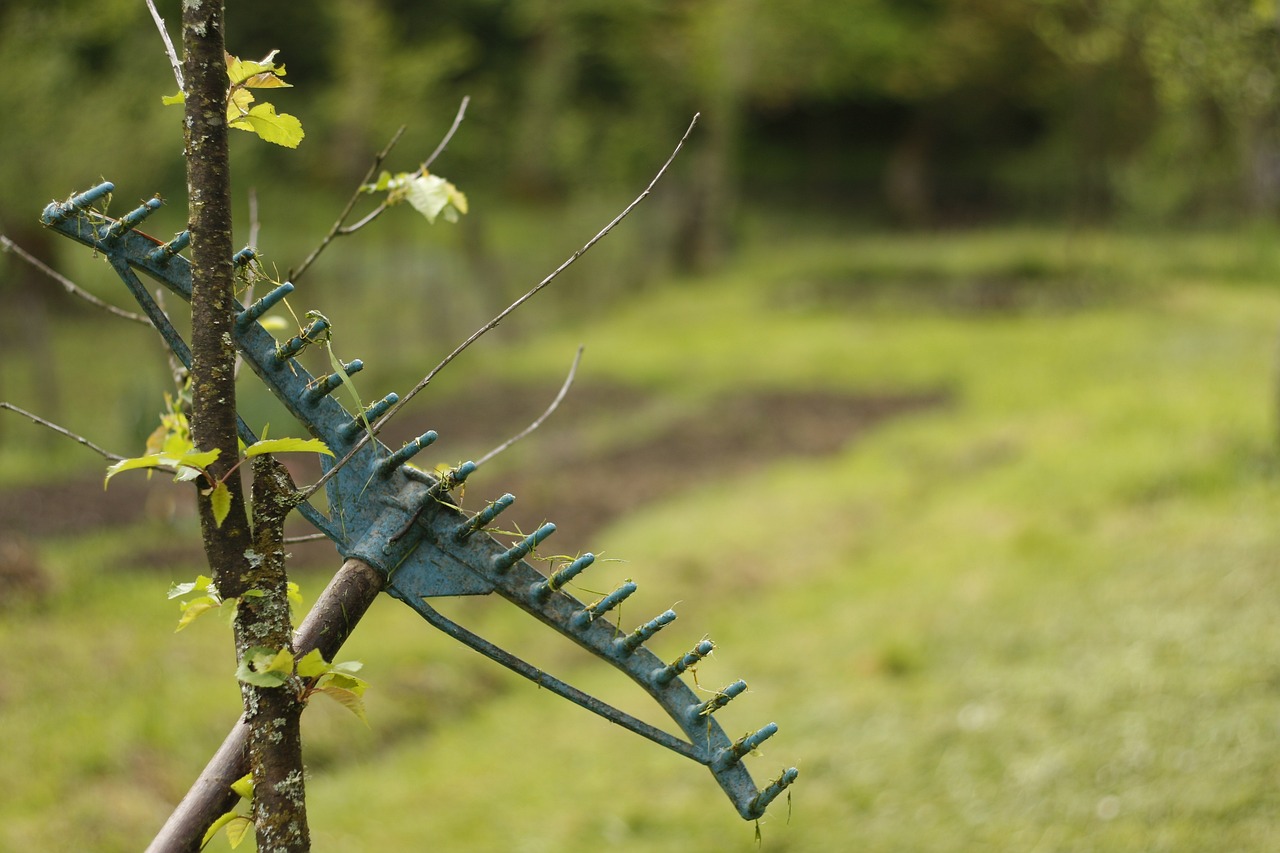
Community Gardening Initiatives
Community gardening initiatives are more than just a trend; they are a vibrant movement that brings people together, fosters sustainability, and combats climate change at the grassroots level. Imagine a patch of land that once lay barren, now transformed into a lush garden where neighbors gather, share knowledge, and grow fresh produce. These initiatives not only beautify urban landscapes but also create a sense of belonging and community pride.
One of the most significant benefits of community gardens is their ability to promote sustainable practices. When people come together to cultivate a shared space, they often adopt eco-friendly methods such as composting, organic gardening, and water conservation techniques. This collective effort not only reduces individual carbon footprints but also encourages participants to be more mindful of their environmental impact. It's like planting seeds of change, both literally and figuratively!
Moreover, community gardens serve as educational hubs. Workshops and events are frequently organized, teaching participants about biodiversity, the importance of native plants, and how to attract pollinators. This knowledge empowers individuals to replicate these practices in their own backyards, amplifying the positive effects on local ecosystems. Think of it as a chain reaction where one small garden can inspire a neighborhood, leading to a greener city overall.
Additionally, these gardens can help address food insecurity by providing fresh fruits and vegetables to local communities. In many urban areas, access to healthy food options can be limited. Community gardens bridge this gap by allowing residents to grow their own produce, which not only nourishes their bodies but also fosters a sense of accomplishment and self-sufficiency. It’s a beautiful cycle: growing food, sharing it with others, and building community ties.
Here’s a quick overview of how community gardening initiatives can impact local communities:
| Impact Area | Description |
|---|---|
| Social Cohesion | Brings neighbors together, fostering relationships and collaboration. |
| Environmental Awareness | Educates participants about sustainable practices and biodiversity. |
| Food Security | Provides access to fresh produce, improving nutrition and health. |
| Economic Benefits | Reduces grocery bills and can lead to local food sales. |
In conclusion, community gardening initiatives are a powerful response to climate change, addressing environmental, social, and economic challenges simultaneously. They are a testament to what can be achieved when people unite for a common cause. By digging in the dirt together, we can cultivate not only plants but also a more resilient and sustainable future.
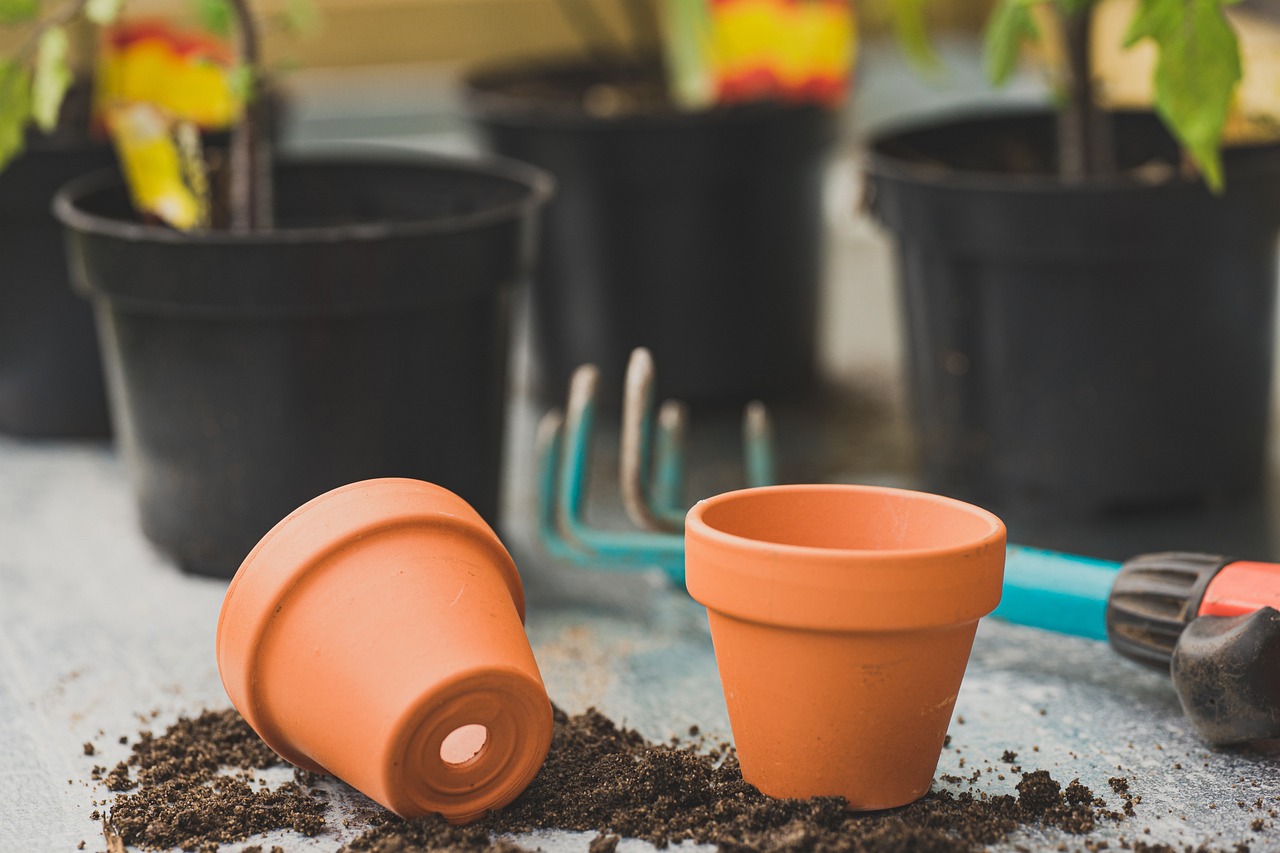
Gardening as a Form of Climate Activism
Gardening isn't just a hobby; it's a powerful form of climate activism that can inspire change and promote awareness about environmental issues. Imagine stepping into your garden and realizing that every seed you plant is a tiny act of rebellion against climate change. It's like planting seeds of hope, not just in the soil, but also in the hearts of those who witness your efforts. When we cultivate our gardens, we are not merely growing plants; we are nurturing a movement that advocates for a healthier planet.
One of the most significant aspects of gardening as activism is its ability to educate and inspire others. When people see vibrant gardens flourishing in their neighborhoods, it sparks curiosity and encourages them to think about their impact on the environment. You can lead by example, showing how simple gardening practices can contribute to a more sustainable world. By sharing your gardening journey, whether through social media or community events, you can spread the message that every little action counts. This is how grassroots movements grow—one garden at a time.
Moreover, gardening can serve as a platform for community engagement. Community gardens, for instance, are not just spaces for growing food; they are hubs for collaboration and education. These gardens bring people together, fostering a sense of belonging and shared responsibility for the environment. In these spaces, individuals can learn about sustainable practices, such as composting, organic gardening, and water conservation. The knowledge shared in these gardens can ripple out into the community, creating a collective consciousness about the importance of environmental stewardship.
To further illustrate this point, consider the following benefits of community gardening as a form of climate activism:
- Creating Awareness: Community gardens can host workshops and events that educate the public about climate change and sustainable practices.
- Encouraging Local Food Production: By growing food locally, communities reduce their carbon footprints associated with transportation and packaging.
- Building Resilience: Gardens can help communities become more resilient to climate impacts by providing food security and reducing heat in urban areas.
Additionally, gardening can be a means of advocating for policy change. When gardeners unite, they can influence local governments to prioritize green spaces, sustainable urban planning, and environmental policies. Imagine a neighborhood where every garden is a statement—a vibrant declaration that we care about our planet. This collective voice can push for legislation that supports sustainable practices, protects natural habitats, and promotes biodiversity.
Gardening as activism also encourages individuals to reflect on their consumption habits. By growing your own food, you become less reliant on industrial agriculture, which is often a significant contributor to greenhouse gas emissions. You can cultivate a sense of self-sufficiency and challenge the status quo of food production. It’s a reminder that we can take control of our food sources and make choices that align with our values.
In conclusion, gardening is not just about the plants; it's about the message we send to the world. Each garden has the potential to be a sanctuary for nature and a beacon of hope for change. So, whether you have a sprawling backyard or a small balcony, remember that your gardening efforts can contribute to a larger movement. By nurturing our gardens, we are also nurturing our planet, and that, my friends, is a beautiful act of activism.
Q: How can I get started with community gardening?
A: Look for local community garden initiatives in your area. Many cities have organizations that facilitate the creation of community gardens. You can also start by gathering a group of interested neighbors and finding a suitable plot of land.
Q: What are some easy plants to grow for beginners?
A: Some beginner-friendly plants include tomatoes, radishes, lettuce, and herbs like basil and mint. These plants are relatively low-maintenance and can thrive in various conditions.
Q: How can I promote my gardening efforts on social media?
A: Share photos of your garden's progress, post tips and tricks you've learned, and engage with local gardening communities online. Use relevant hashtags to reach a wider audience and inspire others to join the movement.
Frequently Asked Questions
- How do plants help in combating climate change?
Plants absorb carbon dioxide during photosynthesis, which helps reduce greenhouse gases in the atmosphere. By incorporating a variety of plants in your garden, you can enhance this natural process and contribute to carbon sequestration.
- What are the benefits of using native plants in gardening?
Native plants are adapted to the local environment and require less water and maintenance. They provide essential habitats for local wildlife and support the ecosystem, making them a sustainable choice for any garden.
- How can I attract pollinators to my garden?
To attract pollinators like bees and butterflies, plant a variety of flowering plants that bloom at different times throughout the season. Avoid using pesticides, and consider adding features like water sources and shelter to create a welcoming environment.
- What are some effective water conservation techniques for gardening?
Techniques like drip irrigation, rainwater harvesting, and mulching can significantly reduce water usage. Additionally, choosing drought-resistant plants can help maintain a beautiful garden while conserving precious water resources.
- How can gardening reduce urban heat islands?
Gardens, especially green roofs and vertical gardens, can cool urban areas by providing shade and releasing moisture into the air. This helps lower surrounding temperatures and improves air quality, making cities more livable.
- What role do community gardens play in climate activism?
Community gardens promote collaboration and sustainability, raising awareness about climate change issues. They serve as educational platforms where individuals can learn about gardening practices that benefit the environment and foster a sense of community.
- Can gardening really make a difference in fighting climate change?
Absolutely! Every garden contributes to carbon sequestration, biodiversity, and sustainable practices. By gardening mindfully, you can create a positive impact on your local environment and inspire others to do the same.



















